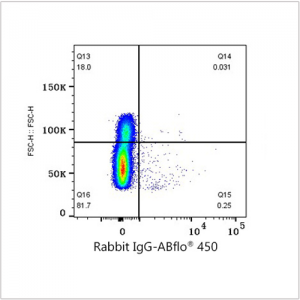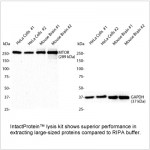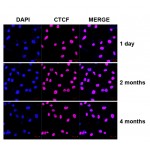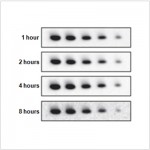ABflo® 450 Rabbit anti-Human CD13/ANPEP mAb (100 T)
| Reactivity: | Human |
| Applications: | FC |
| Host Species: | Rabbit |
| Isotype: | IgG |
| Clonality: | Monoclonal Antibody |
| Conjugation: | ABflo® 450. Ex:406nm. Em:445nm. |
| Gene Name: | alanyl aminopeptidase, membrane |
| Gene Symbol: | ANPEP |
| Synonyms: | APN; AP-M; AP-N; CD13; LAP1; P150; PEPN; hAPN; GP150 |
| Gene ID: | 290 |
| UniProt ID: | P15144 |
| Immunogen: | Recombinant fusion protein containing a sequence corresponding to amino acids 69-967 of human CD13/ANPEP (NP_001141.2). |
| Dilution: | FC,5 μl per 10^6 cells in 100 μl volume |
| Purification Method: | Affinity purification |
| Concentration: | 0.04 mg/ml |
| Buffer: | PBS with 0.09% Sodium azide,0.2% BSA, pH7.3. |
| Storage: | Store at -20°C. Avoid freeze / thaw cycles. |
| Documents: | Manual-ANPEP Antibody |
Background
Aminopeptidase N is located in the small-intestinal and renal microvillar membrane, and also in other plasma membranes. In the small intestine aminopeptidase N plays a role in the final digestion of peptides generated from hydrolysis of proteins by gastric and pancreatic proteases. Its function in proximal tubular epithelial cells and other cell types is less clear. The large extracellular carboxyterminal domain contains a pentapeptide consensus sequence characteristic of members of the zinc-binding metalloproteinase superfamily. Sequence comparisons with known enzymes of this class showed that CD13 and aminopeptidase N are identical. The latter enzyme was thought to be involved in the metabolism of regulatory peptides by diverse cell types, including small intestinal and renal tubular epithelial cells, macrophages, granulocytes, and synaptic membranes from the CNS. This membrane-bound zinc metalloprotease is known to serve as a receptor for the HCoV-229E alphacoronavirus as well as other non-human coronaviruses. The gene ANPEP has also been shown to promote angiogenesis, tumor growth, and metastasis and defects in this gene are associated with various types of leukemia and lymphoma.
Images
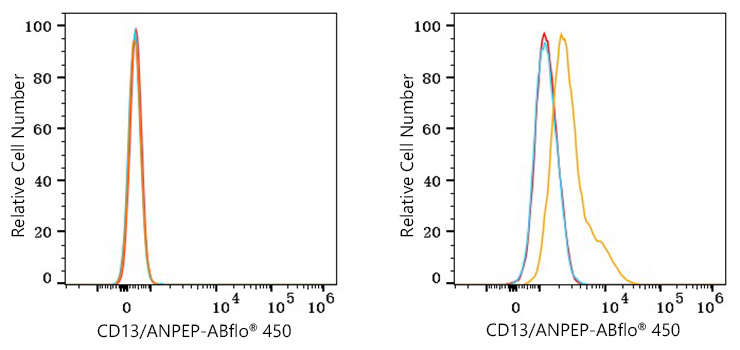 | Flow cytometry: 1×10^6 Jurkat cells (negative control,left) and Hep G2 cells (right) were surface-stained with ABflo® 450 Rabbit anti-Human CD13/ANPEP mAb (A26272,5 μl/Test,orange line) or ABflo® 450 Rabbit IgG isotype control (5 μl/Test,blue line). Non-fluorescently stained cells were used as blank control (red line). |
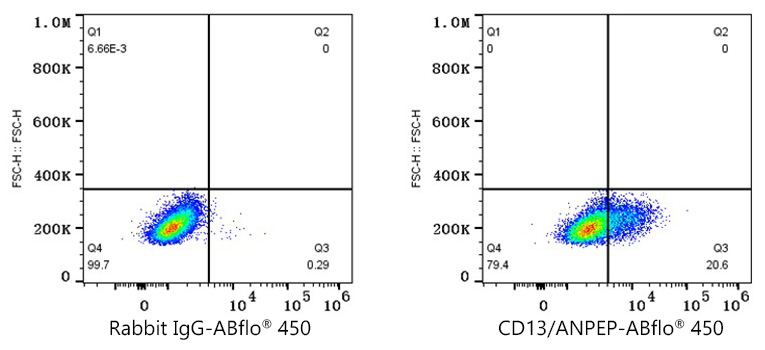 | Flow cytometry: 1×10^6 Hep G2 cells were surface-stained with ABflo® 450 Rabbit IgG isotype control (5 μl/Test,left) or ABflo® 450 Rabbit anti-Human CD13/ANPEP mAb (A26272,5 μl/Test,right). |
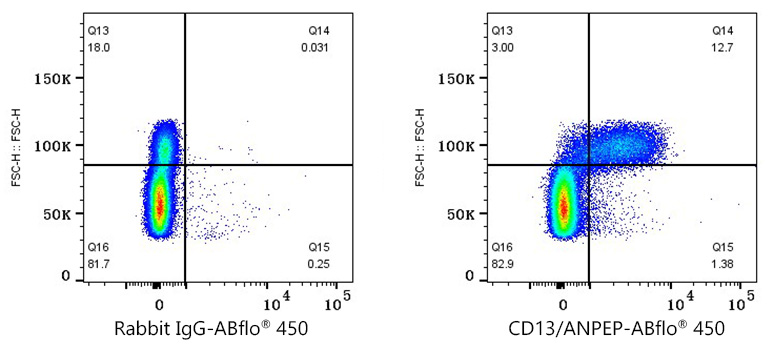 | Flow cytometry: 1×10^6 Human PBMC were surface-stained with ABflo® 450 Rabbit IgG isotype control (5 μl/Test,left) or ABflo® 450 Rabbit anti-Human CD13/ANPEP mAb (A26272,5 μl/Test,right). |
You may also be interested in:

